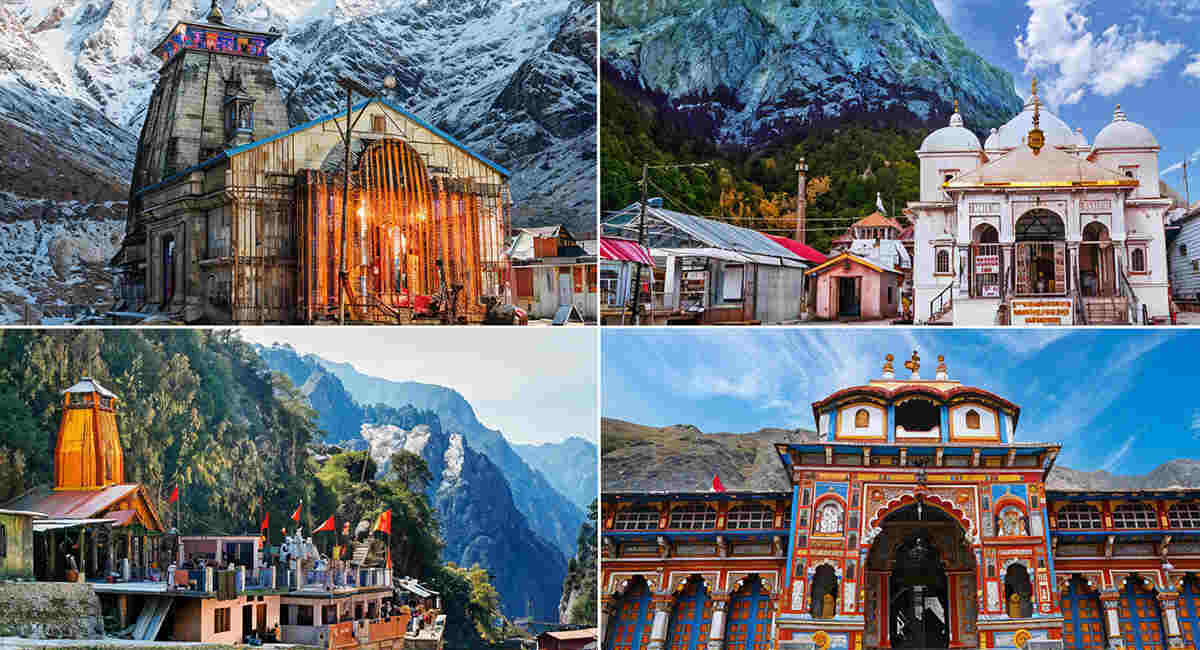Char Dham of Odisha: A Sacred Spiritual Journey
Odisha, often hailed as the land of temples, is significant in India’s spiritual and cultural map. This beautiful state, nestled on the east coast of India, is well known for its natural beauty, classical heritage, and deep spirituality. Among the many sacred destinations in the region, the Char Dham of Odisha stands out as an influential and revered pilgrimage circuit that draws countless devotees every year.
When we speak of Char Dham nationally, most people refer to the four sacred abodes of Badrinath, Dwarka, Puri, and Rameswaram. However, Odisha has its own Char Dham a unique set of four pilgrimage sites within the state that are of great spiritual significance to devotees, particularly in the Vaishnavite and Shaivite traditions.
Let’s delve into the mystical charm and divine atmosphere of these four holy shrines that form the Char Dham of Odisha:
Puri Jagannath Temple
No spiritual journey in Odisha can begin without a visit to the Jagannath Temple in Puri, one of the most celebrated Hindu temples in the country and part of the national Char Dham.
A Look into the Divine:
The temple dates back to the 12th century and is a spiritual hub and architectural wonder dedicated to Lord Jagannath, a manifestation of Lord Krishna. Devotees worship Lord Krishna and his siblings, Balabhadra and Subhadra, in this rare temple.
The most iconic event associated with this temple is the Rath Yatra, during which thousands of devotees pull massive chariots carrying the three deities out of the sanctum sanctorum. Ananda Bazaar, the temple’s kitchen, ranks among the largest in the world and serves thousands of devotees the sacred Mahaprasad daily.
Spiritual Significance:
Puri is the Vaishnavite seat among the four, symbolizing Moksha (liberation). It attracts pilgrims from across the globe who believe that visiting this sacred place cleanses the soul and leads to eternal salvation.
Lingaraj Temple, Bhubaneswar
One of the oldest temples in Odisha, the Lingaraj Temple, is situated in the capital city of Bhubaneswar. It is a magnificent example of Kalinga-style architecture and is believed to have been constructed in the 11th century.
Lord of the Cosmos:
Dedicated to Lord Shiva, the temple houses a massive Shiva linga known as Harihara, a unique representation that combines both Vishnu and Shiva. This amalgamation reflects the syncretic tradition of Odisha, where both Shaivism and Vaishnavism coexist harmoniously.
The Shaivite Seat:
As the Shaivite dham, the Lingaraj Temple represents Yoga (union) and spiritual discipline. The temple premises are a hub of devotion, particularly during Shivaratri, when the temple draws thousands of devotees who observe fasts and participate in night-long rituals.
Samaleswari Temple, Sambalpur
Located on the banks of the Mahanadi River in Sambalpur, western Odisha, the Samaleswari Temple is the third of the Char Dham and is dedicated to Goddess Samaleswari, a revered form of Shakti or the divine mother.
The Fierce Mother Goddess:
This temple holds immense significance for Shakta followers. Goddess Samaleswari is considered the presiding deity of the region, lovingly called ‘Samalei Maa’ by the locals. The temple is a vibrant cultural and religious hub deeply rooted in local folklore and tribal beliefs.
Shakti Peetha of Odisha:
As the Shakti dham, Samaleswari represents Bhakti (devotion). The temple is incredibly vibrant during Navaratri and Nuakhai, a harvest festival that celebrates the bounty of nature and the blessings of the goddess.
Tara Tarini Temple, Ganjam
The Tara Tarini Temple is located in the Ganjam district, on the banks of the River Rushikulya, atop the Kumari hills. It honors the twin goddesses Tara and Tarini, incarnations of Adi Shakti.
Divine Feminine Energy:
According to mythology, devotees believe that the breasts of Goddess Sati fell here, making it another powerful Shakti Peetha. The location is a popular pilgrimage spot for followers looking for fertility, wealth, and strength.
A Seat of Shakti and Tantric Worship:
This shrine represents Tantra (energy) in the spiritual sense. The rituals here are deeply symbolic, and the temple is a major center for Tantric practices and Kundalini worship. Tuesdays in Chaitra (March-April) are particularly auspicious, drawing thousands of pilgrims.
The Interwoven Significance of the Four Dhams
While each of these four sacred sites is powerful in its own right, together they represent a holistic spiritual path:
- Puri Jagannath – Moksha (Liberation)
- Lingaraj Temple – Yoga (Union with the Divine)
- Samaleswari Temple – Bhakti (Devotion)
- Tara Tarini Temple – Tantra (Spiritual Energy)
These four dams reflect the confluence of Shaivism, Vaishnavism, and Shaktism and represent Odisha’s inclusive and diverse spiritual culture. The Char Dham pilgrimage offers physical travel and an inner transformation journey, touching upon liberation, union, devotion, and awakening.
How to Plan Your Char Dham Yatra in Odisha
- Best Time to Visit: October to March is ideal due to the pleasant weather.
- Travel Route: You can start from Bhubaneswar (Lingaraj), proceed to Puri (Jagannath), travel to Ganjam (Tara Tarini), and finally head west to Sambalpur (Samaleswari).
- Mode of Travel: Odisha is well-connected by road, rail, and air. Bhubaneswar serves as the gateway to all four sites.
- Local Cuisine: While on your pilgrimage, don’t miss out on Odisha’s traditional delicacies, such as Dalma, Pakhala Bhata, and Chhena Poda.
Final Thoughts
The Char Dham of Odisha offers more than just a pilgrimage, it takes you on a journey into the soul of a land rich in mythology, devotion, and divinity.. Each Dham whispers age-old tales, offers spiritual solace, and deepens one’s connection with the divine. Whether you are a devout pilgrim or a cultural enthusiast, exploring these sacred sites is an experience that will stay with you for a lifetime.
Set out on this heavenly journey — the Char Dham of Odisha awaits you.


